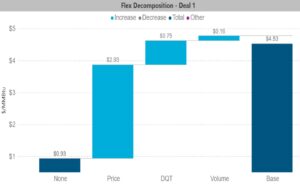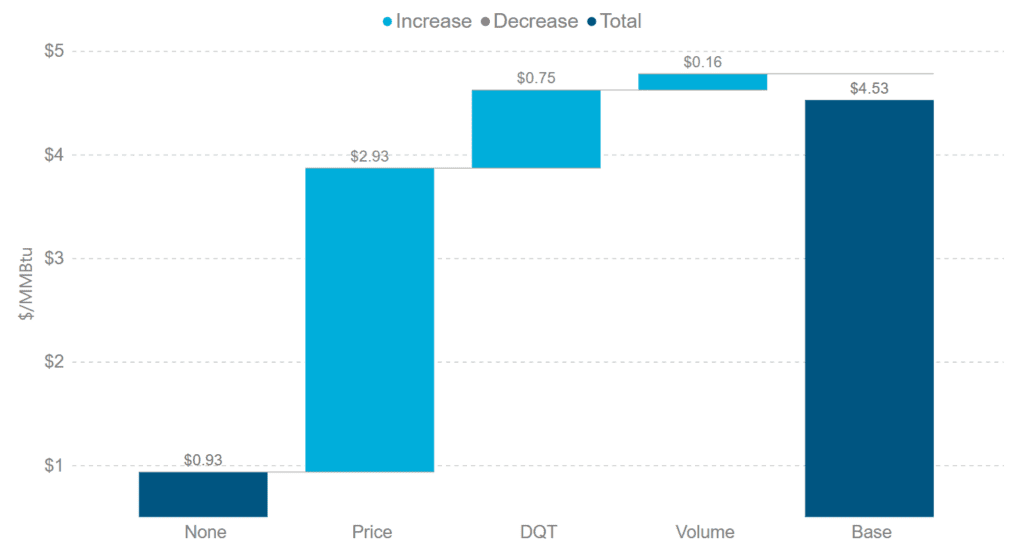
LNG deal structures can include various types of flex options, such as location flex, price flex, volume flex, and flexibilities around cargo scheduling, including DQT and UQT.
Flex options may be explicit (specifically detailed in the contract) or implicit (stemming from the flexibility within an existing LNG portfolio, like the choice to sell an FOB cargo to different regions such as Europe or Asia).
The below chart illustrates an LNG deal’s base value alongside the added value potential by each flex component in calculating the total deal value. Without flex options, the deal value is relatively low, at just under $1/MMbtu. The flex options add nearly four times the base value, with the largest contribution from price flexibility.
Common examples of flex options
Location Flex
Location flexibility allows buyers to redirect gas to regions with higher prices, enhancing the value received for a cargo. For instance, during winter, Asia often experiences increased prices due to increased demand, drawing supplies from regions like Europe. Similarly, during the Russia-Ukraine conflict, disrupted European supply chains led European markets to pay premiums to secure gas supplies. Location flex options provide the ability to respond to volatile market conditions, making them a valuable feature in LNG contracts.
DQT (Downward Quantity Tolerance)
DQT provides the option to cancel cargos, enhancing profitability in long-term LNG contracts through the flexibility to respond to market and price changes. For example, in a contract with monthly cargo commitments over a year, a price drop at the destination might lead to a loss for the buyer. The DQT option lets the buyer avoid such losses by cancelling the cargo, improving deal profitability.
UQT (Upward Quantity Tolerance)
UQT allows buyers to take on extra cargos when it’s advantageous to do so. In favourable market conditions, UQT options allow buyers to add cargos to maximise profit. This flexibility, often paired with other options like location or price flex, amplifies potential gains.
Volume Flex
Volume flexibility lets buyers adjust purchase quantities within specified limits, allowing them take advantage of shifts in market dynamics or operational requirements. Volume flex options are valuable both for managing supply fluctuations and for capturing economic opportunities when market conditions change.
Compound Flex
When multiple flex options are exercised together, this ‘compound flexibility’ can yield higher revenue than individual options used separately. This synergistic effect makes compound options a powerful factor in enhancing deal profitability.
Mastering the different flex options is essential for effective management of LNG deals and portfolios, enabling strategic responses to market dynamics and maximising revenue potential.
